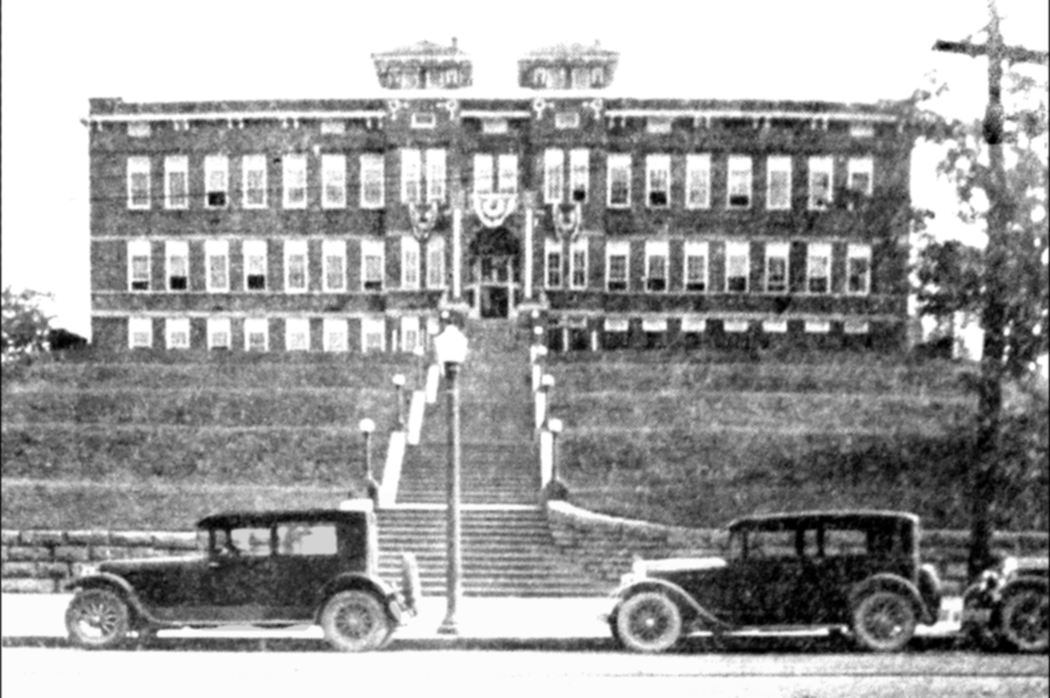A January 1930 Johnson City Chronicle newspaper clipping concerning a unique program promoted by Johnson City High School’s (Science Hill) Home Economics Department had an eye-catching title, “Menus Planned by Students for Fat Folks.”
A subtitle further stated, “Home Economics Department of Senior High Display Samples of Goodies.” The display cabinet of the Home Economics Department caused much commentary among the student body and Parent-Teachers Meeting on that Tuesday afternoon. Appetizing odors permeated the air, causing a significant number of students to crowd close to the glass door to see what was appealing to their sense of smell.

Several “oohs” and “aahs” were heard attributable to a display of delicious foods that had been arranged for students in two groups, those overweight and those underweight. Imagine that occurring today. The newspaper provided a sample of a suggested daily menu of food items (and corresponding calorie count) for each group. Quantity was not always specified.
Overweight Diet
The 200-calorie breakfast menu consisted of grapefruit (100, no sugar), black coffee (0), thin cream (50) and toast (50).
The luncheon 425-calorie offering was comprised of two bran muffins (250), beans (75) and pineapple salad (100).
The evening meal yielded 625 calories with a listing of beets (100), meatloaf (100), bran muffins (275) and asparagus on toast (150).
The overweight person’s daily count totaled 1,250 calories.
Underweight Diet
Breakfast displayed six offerings totaling 575 calories: oranges (75), bacon (100), eggs (100), milk (125), toast (50) and cornflakes topped with bananas (125).
For lunch, persons on this diet were allowed 880 calories: peas and carrots (125), graham bread (70), mousse with chocolate sauce (300), milk (125), slice of meat loaf (150) and potatoes (110).
The dinner meal contained 1,180 calories (555 more than that for those on the overweight diet) that included bran muffins (125), French cocktail (250), pineapple salad with cheese and dressing (325), tomatoes (110), cold chicken (200), spinach (80), carrots (75) and beans (15). The underweight person’s daily total came to 2,635 calories, more that twice that for the overweight person.
The plum (no pun intended) in all this was that when a person crossed the line from overweight to underweight, they were encouraged to switch diets. The lower calorie diet was supposed to reduce weight while the higher one was designed to keep students at their ideal weight.
A closer inspection revealed that the underweight crowd painfully uttered the “oohs” while the underweight ones joyfully proclaimed the “aahs.” However, the two groups were pleased that both healthy meals were aimed at keeping students at their prescribed normal weights.
On a further note … A few weeks later, 65 members of the school’s Home Economics Club and a few guests met in the home of Miss Josephine Cloninger at 212 E. Eighth Avenue. Assisting hostesses were Misses Anna Bell St. Clair, Rhea Seaver and Edith Cox (my aunt). Several pupils from the Foods and Cookery section of the department presented an entertaining two-act program titled, “The Contrast.”
According to another newspaper clipping: “Delicious refreshments were served consisting of sandwiches (352), hot chocolate (112) and cookies (101).” Depending on the quantity consumed, the calorie count could easily have exceeded 1200. This group, who likely had a hand in developing the two school diets, was definitely not aiming the social event’s snacks at fat folks.

Comments are closed.